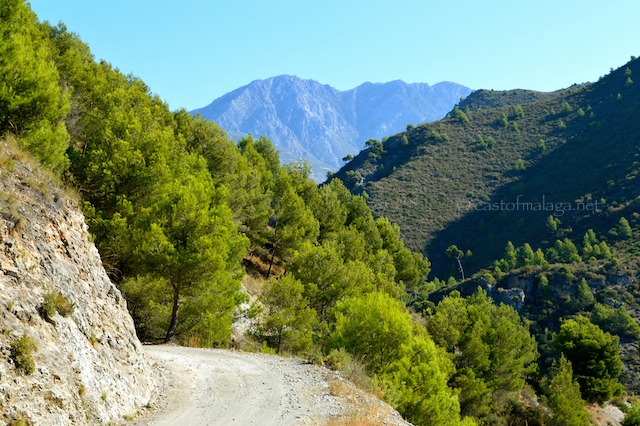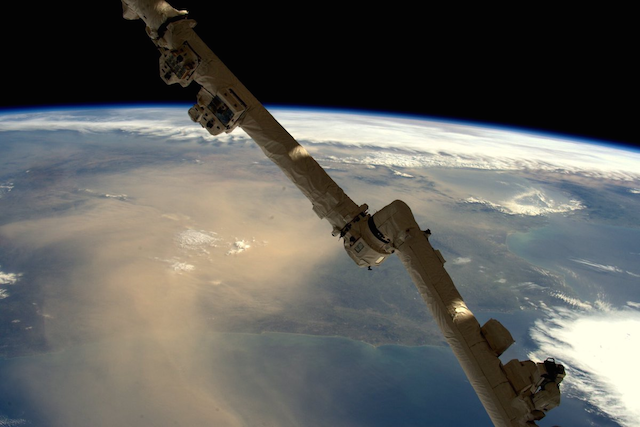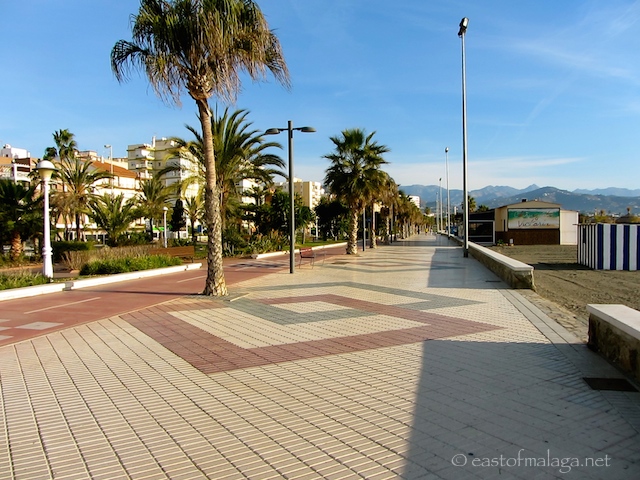
For those of you who don’t know, the Axarquía means “land to the east” (of Málaga city) – hence the name of this blog, East of Málaga.
La Axarquía is roughly a wedge-shape of land extending along the coast as far east as Maro, with a northern edge close to Antequera, and bounded by mountains on each side.
Acknowledged as having one of the best climates in Europe, the weather rarely gets too cold in this part of Spain, even in January and February. You’ll still need to bring a jacket, but you’ll probably be able to cast it off when you sit eating your lunch in the sunshine.

Of course, it’s always a great time to visit Málaga province with the Festival of San Isidro in May , the Passion play at Riogordo and the amazing parades during Semana Santa (Easter week) or the San Juan fireworks and festivities to welcome the longest day in June. But, when the skies are grey and the weather wet and wild in northern Europe – here are forty-nine COOL reasons to visit the east of Málaga this winter:
1. Beautiful clean beaches which you might not get all to yourself – but in many places you will.
2. Sunrise and sunsets are particularly spectacular during the winter months.
3. Walk down the streets and there are oranges on the trees – how cool is that?
4. We have some of the prettiest white villages in Spain, and here are just three – Frigiliana, Comares and Cómpeta
5. Ski-ing in the Sierra Nevada snowy mountains is only one and a half hours away, now that there’s motorway all the way to the final turn off near Granada. You really can ski in the morning and sunbathe on the beach in the afternoon.

The white mountain village of Frigiliana
6. Eating fresh fish on the beach – the local delicacy is espetos (or fish-on-a-stick!)
7. Forget your stereo-typical image of the Costa del Sol. This is authentic Spain.
8. Cost of living is low compared with many places around the world (and Europe) meaning your holiday money will go much further.
9. There are flowers in bloom all year round, with beautiful Birds of Paradise, hibiscus and bougainvillaea to brighten up the place.
10. If you fancy a fiesta, we have them in December and January, too.
11. Gaze at the boats in the Marinas in Málaga, Caleta de Vélez and further east along the coast at Marina del Este.

The Bird of Paradise is in flower, right now
12. You can see snow on the mountains whilst you are basking in sunshine.
13. Buy a ticket for the biggest lottery in the world – El Gordo (in December) and El Niño (in January) – you never know your luck!
14. It’s usual to be given a free tapas with each drink you buy.
15. We have almond blossom in January and February.
16. There are loads of places to visit for day trips including El Torcal, the Dolmens, Granada, and Málaga.

El Tornillo rock formation at El Torcal
17. Málaga was founded by the Phoenicians almost 3000 years ago, and later settled by the Romans and the Moors – and we have some of the architecture to prove it!
18. It’s family friendly (and safe) – you’ll see all the generations out together taking their evening stroll.
19. We have some amazing food markets and street markets.
20. You can try some delicious local wines, which are very good value.
21. Climb to the top of the highest mountain in Málaga province. La Maroma stands 2066m and looks majestically over the Axarquía.
22. Enjoy a walk around the scenic Lake Viñuela or up Rio Chillar.

Enjoy a scenic walk along the Rio Chillar in Nerja
23. Visit the Buddhist stupa near Vélez-Málaga – you didn’t expect to see one of those, did you?
24. We have some great hiking routes offering stunning views.
25. If cycling is your thing, we have steep mountain roads and La Vuelta de España visits Málaga each summer.
26. You’ll probably encounter a herd of goats on the road as you drive near some of the white villages.
27. There are fewer tourists around at this time of year.

Fancy walking through this archway in Canillas de Aceituno?
28. See the hand-built wooden jabegas (traditional local fishing boats) on the beach.
29. Walk along the gorgeous pebbled streets – with each village having their own unique design.
30. Meet up on the Balcón de Europa in Nerja, with views across the Mediterranean Sea.
31. See the traditional farming methods still used here – with oxen and mules.
32. Count the old men sitting on benches under the shady trees, watching the world go by.
33. See the hillsides terraced with vines, almond and olive trees.

Mountains and hillsides of La Axarquia
34. There are rugged cliffs and secret coves.
35. Stunning natural park areas, both inland near the mountains and even extending out into sea.
36. Every town and village has their own Christmas lights, but the display in Málaga each December just gets better and better.
37. There are around 320 sunny days every year.
38. There are hot-chestnut sellers on street corners.

Malaga’s gothic Christmas lights 2014
39. If you love star-gazing then the countryside around the Axarquía is the perfect place.
40. On clear winter evenings, as the sun sets we can sometimes see another continent – yes, the Rif mountains in Morroco, Africa.
41. For all you culture-vultures, there are many world-class museums in Málaga including the Centre Pompidou, the Russian museum and, of course Málaga’s most famous son – Picasso.
42. Gorgeous, long promenades along the coastline to stroll along in the winter sunshine.
43. The sales (rebajas) start in the shops on January 7th, where you’ll find leather shoes and bags made in Spain, and cheaper prices in Mango, H&M and Zara than anywhere else in Europe.

Making paella on the beach
44. Eat paella on the beach.
45. If you enjoy watching football, Málaga CF are in the top Spanish league, La Liga. Buy some tickets to experience match-day or at very least watch the match on TV for free in one of the bars.
47. There are usually special offers on budget flights such as Easyjet, Ryanair, Vueling, Norwegian and many more airlines.
48. Sit outside on a sunny terrace, to have a drink or meal, without your coat on!
49. It’s the perfect place to base yourself for a tour of classic Andalucía – Córdoba, Granada, Seville, Jerez, and Ronda are all on the doorstep with good road and rail links.
REMEMBER: Before somewhere becomes your favourite place, it’s a place you’ve never been before.
What are you waiting for? When will YOU be visiting Málaga?

































